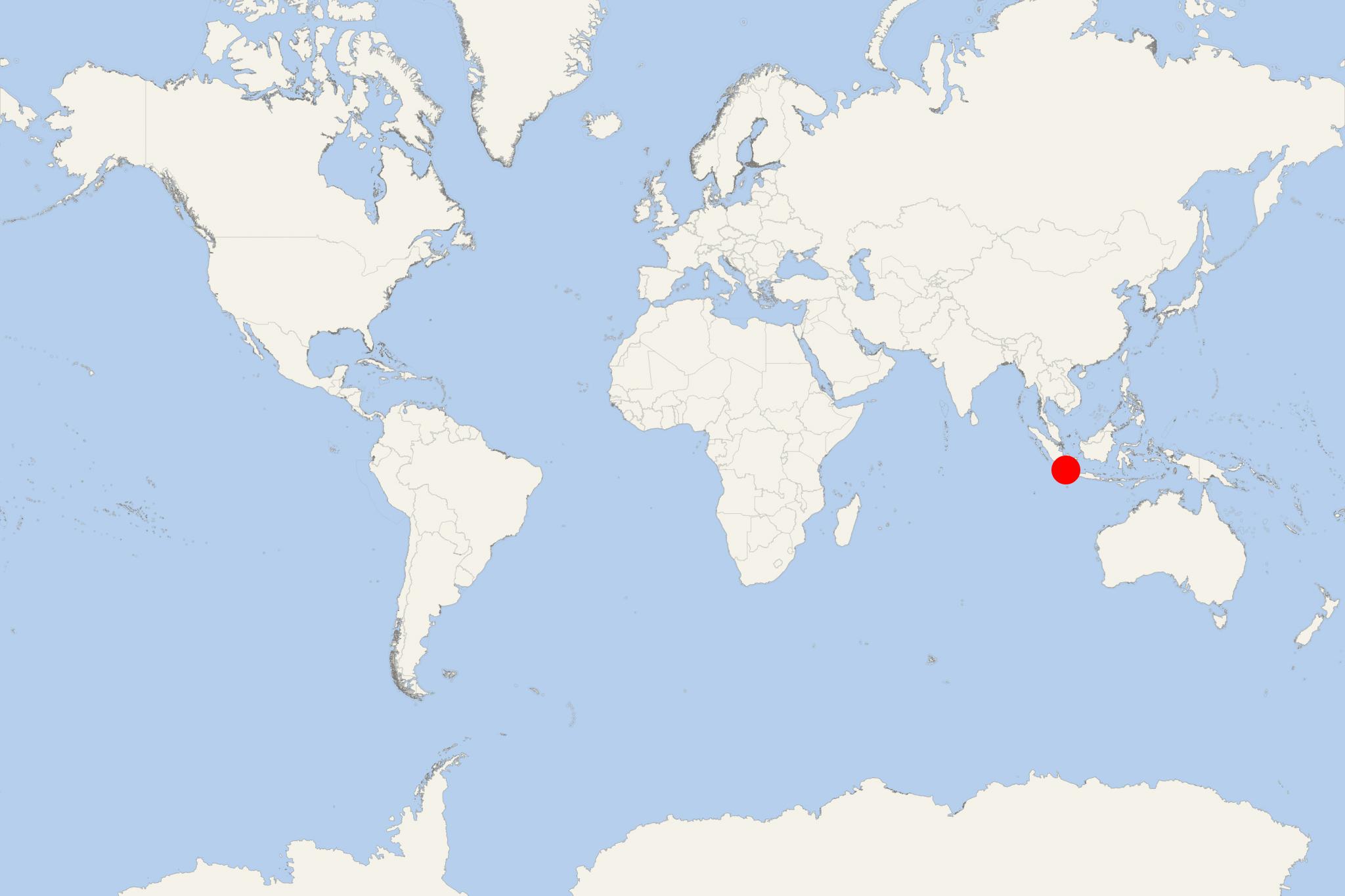Krakatoa Island Indonesia (Anak Krakatau, Lampung)
Cruise Port schedule, live map, terminals, news
Region
Australia - New Zealand - Pacific Ocean Islands
Local Time
2024-11-23 06:56
 81°F
81°F 27.3°C

 Mod. breeze
Mod. breeze6.4 m/s
 83 °F / 29 °C
83 °F / 29 °C 81 °F / 28 °C
Port Krakatoa Island Indonesia cruise ship schedule shows timetable calendars of all arrival and departure dates by month. The port's schedule lists all ships (in links) with cruises going to or leaving from Krakatoa Island Indonesia, Anak Krakatau, Lampung. To see the full itineraries (ports of call dates and arrival / departure times) and their lowest rates – just follow the corresponding ship-link.
| Day | Ship | Arrival | Departure |
|---|---|---|---|
| 7 August, 2024 Wednesday | |||
| 8 August, 2024 Thursday |
Krakatoa Island (aka Anak Krakatau) is a volcanic island in Sunda Strait, located between Java Island and Sumatra Island. Krakatoa is part of Indonesia's Lampung province. Anak Krakatau also includes the surrounding three isles which are remnants of the Krakatau Island (with three volcanic peaks) obliterated during the catastrophic volcano eruption in August 1883.
From the formed in 1883 caldera, in 1927 emerged a new island (Anak Krakatau) which currently has eruptive activity. Most recently, eruptions were recorded in 2009, 2010, 2011, 2012.
On August 26-27, 1883, Krakatoa eruptions culminated in four massive explosions - ranked the most violent in the world's recorded history. The volcanic eruption was equivalent to 200 TNT megatons - or about 13,000 times the yield of the atomic bomb (Little Boy) with which the US Army destroyed Hiroshima Japan at the end of WW2 (1939-1945). Krakatau volcano eruption was also four times the yield of the world's most powerful nuclear bomb ever detonated - the USSR's Tsar Bomba (50 megaton hydrogen bomb) tested on October 30, 1961.
The eruption ejected approx 25 km3 (6 mi3) of rock and volcanic ashes, and also created giant tsunamis. The explosion was heard in radius of 3600+ km (2200 mi). It resulted in 165 destroyed villages and towns, plus 132 seriously damaged, over 36,000 deaths (some sources report over 120,000) and many more thousands injured. In the year following the eruption, the world's average temperatures fell by 1,2 C globally. Weather patterns became to chaotic for years. Temperatures return to normal in 1888.
Anak Krakatau grows an average 13 cm (5 inches)) per week, or average 6,8 m (22 ft) per year. The most recent large lava eruption was in 1994. In April 2008 were released lava, rocks and hot gases. On October 15, 2018, Anak Krakatau had an eruption projecting lava bombs into the surrounding waters. As of 2018, Krakatoa Island's height is 813 m (2667 ft).
